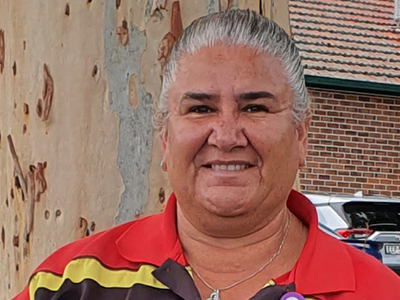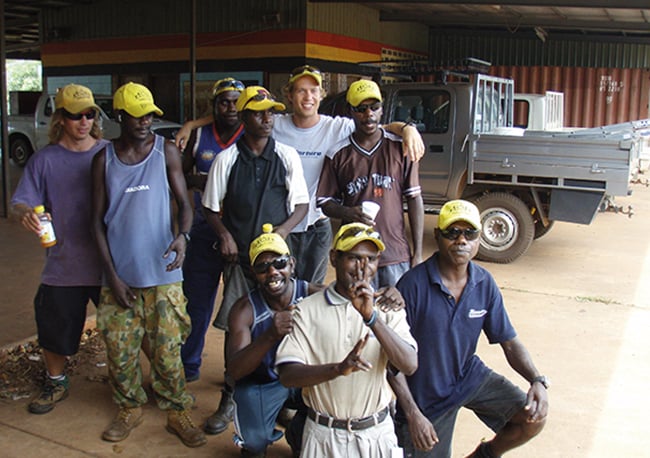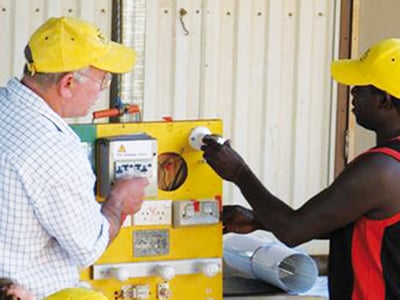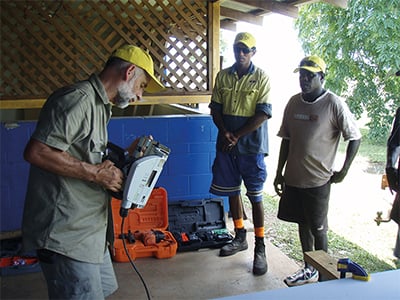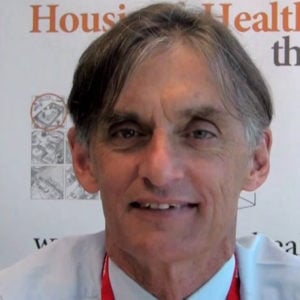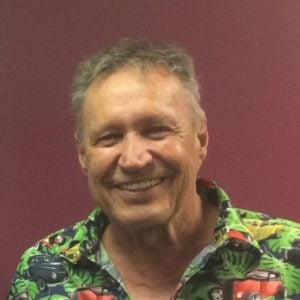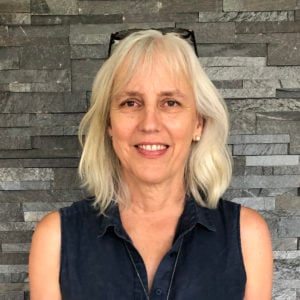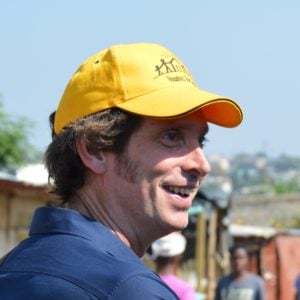Dr. Paul Torzillo
Physician // Director // Sydney // Involved since 1985
Qualifications (formal)
- AM, MBBS, FRACP, FCCM
- Respiratory and Intensive care physician at the Royal Prince Alfred Hospital in Sydney,
- Head, Department of Respiratory Medicine, RPAH
- Executive Clinical Director, RPAH
- Clinical Director, Respiratory and Critical Care Services, Sydney Local Health District
- Medical Director of Nganampa Health Council in South Australia since the 1980s
- Clinical Professor of Medicine at the University of Sydney.
- Board member of The Fred Hollows Foundation 2012
What do you bring to the HH work?
Background in clinical research, long experience in Aboriginal health, some experience in developing country child health.
What have you learned from being involved in the work?
The absolute need for high-level technical detail to tackle major disadvantage in areas like housing and the living environment.
In an ideal world what directions, ideas, results would you like to see HH and the Housing for Health work become or achieve?
I would like to see broader application of the principles and detail of the work in Aboriginal housing as well as expand the focused work internationally.
Stephan Rainow
Public/Environmental Health Officer // Director // Alice Springs // Involved since 1985
Qualifications (formal)
BA Anthropology
What do you bring to the HH work?
I have spent many years working in communities on housing and infrastructure issues, can speak Pitjantjatjara and I was party to the development of the UPK Report.
What have you learned from being involved in the work?
I have learnt that the participation of community members in the projects is critical for the success of the project.
I have learnt that it is possible to maintain a house so that it functions. I have learnt that the householders are not necessarily the main threat to the house. I have learnt never to underestimate what can be achieved by a small group of skilled people with a clear focus and methodology.
I have also learnt that governments can lack capacity and sometimes there is a tail-wagging but no dog!!
If you bang your head against the brick wall long enough sometimes the brick wall gives way.
In an ideal world what directions, ideas, results would you like to see HH and the Housing for Health work become or achieve?
It would be great to become irrelevant because function rates are able to be maintained at a high level and people can carry out the 9HLPs on a daily basis. However, I would like to see Housing for Health local teams employed in the provision of maintenance. Trialled R&D products incorporated in new houses and at another level, I would like to see an increase in the capacity of the general population to appreciate and get involved in improving indigenous housing.
Karin Richards
National Manager // Director // Sydney // Involved since 2000
Qualifications (formal)
BSci (Business Administration / Sociology), Skidmore, USA
What do you bring to the HH work?
Patience, compassion and sense of humour. As well as organisation, flexibility and attention to detail.
What have you learned from being involved in the work?
- No survey without service (fix work)’. How important immediate results are to a person’s housing and health.
- How critical it is to have rigorous methodology and quality data.
- An important strength of the HfH projects is the involvement of community members at many stages.
- The importance of HH’s ability to self-assess and then evolve so the process improves.
- The continuity of people is undervalued
In an ideal world what directions, ideas, results would you like to see HH and the Housing for Health work become or achieve?
In an ideal world, HfH methodology would be adopted as a model providing data that can be used to improve the health and safety of people not just in low-income housing Australia but internationally. Also, Governments would realise the focus is on the people in the house, not just the house.
David Donald
Architect // Director // Newcastle // Involved since 2013
Qualifications (formal)
- Bachelor of Science Architecture (1993) University of Sydney, Australia
- Bachelor of Architecture (1996 Hons Class 1) University of Sydney, Australia
- Registered Architect, NT Australia (510)
- Director, Central Australian Affordable Housing Company (CAAHC)
What do you bring to the HH work?
Direct experience at the local community level managing Aboriginal community housing.
10 years experience consulting with community, designing and project managing Aboriginal housing contracts across the NT, Kimberley and SA.
What have you learned from being involved in the work?
That while housing government policy operates on 10-year cycles from low-level community engagement to outright alienation, local communities remain steadfast in their right for self-determination – and through this quality housing and good health. If you can stay connected with community and keep doing good work, eventually government policy catches up.
In an ideal world what directions, ideas, results would you like to see HH and the Housing for Health work become or achieve?
I would like to see the work have a greater influence on sustainable housing maintenance systems around the country, with Housing for Health principles adopted and normalised in community housing organisations, and government public housing. With 3/4 of housing failure due to lack of routine repair and maintenance, this is where actions to improve health can have their biggest impact. Whilst this may take many forms, it will be a great day when the people running community and public housing understand the incredible role they can play in helping their community to achieve good health.
The late Paul Pholeros
Architect // Director // Sydney // Involved from 1985-2016
Qualifications (formal)
- Paul Pholeros AM
- Bachelor of Science Architecture (1974) University of Sydney, Australia
- Bachelor of Architecture (1976 Hons Class 1) University of Sydney, Australia
- Registered Architect, NSW Australia (4878) and Life Fellow of the Australian Institute of Architects
- Director of Healthabitat Pty Ltd
- Principal of Paul Pholeros Architects since 1984
- Paul Harris Fellow (awarded to a non-Rotarian)
Previously:
- Adjunct Professor of Architecture, University of Sydney, Australia
- Vice Chair Emergency Architects Australia, Board Member Emergency Architects Australia
- One of four members appointed by the Prime Minister to the National Policy Commission on Indigenous Housing 2009.
What do you bring to the HH work?
Architectural practice skills developed since 1976 and experience in Indigenous housing, health and environmental health work with the other two founding directors of Healthabitat since 1985. This work has involved exposure to and learning from, a very large and talented team of people working nationally and internationally.
What have you learned from being involved in the work?
- Change comes slowly.
- The work must be built around people -those doing the work and those who we are working with.
- Technical skill and raising the technical standards of all aspects of the work is important.
- Assume nothing.
- Good housing/ health policy ultimately comes from good work proven in the field, not from government. Governments may occasionally adopt the policy direction well after it has been proven.
- Local community people have the greatest interest in the principles and detail of the work as they have the greatest to gain by the work being successful.
- Complex problems linking health and the living environment require multidisciplinary teams of people to provide the best solutions ….HH has assembled such a team of people
- Myths are hard to dispel …despite hard data eg of over 265,000 items of work fixed, showing less than 8% of all work fixed by HH is due to damage, overuse or misuse – the myth of the ‘people damaging houses’ remains.
- The lessons learnt developing the Australian work and many of the Healthy Living Practices are proving to be equally relevant in developing countries such as Nepal, Bangladesh, South Africa and the USA. The problems are universally similar and the crafting of relevant solutions becomes the work of the local communities, skilled trades and professionals.
In an ideal world what directions, ideas, results would you like to see HH and the Housing for Health work become or achieve?
- Ideally, within 5 years of the political will being activated, the day to day work of HH fixing houses would not be needed. This is not false optimism as it has been proven by over twenty-five years of work to be financially, socially and technically possible. Given the resources of Australia and the proven Housing for Health methodology, it is a national disgrace that any citizens have to live in such poor conditions.
- HH could then devote effort to radically improving the living environment not just making it safe and adequate.
- The skills developed in Australia could then be used even more extensively overseas where at least 70% of the world’s population would benefit from the introduction of some of the Housing for Health principles.
